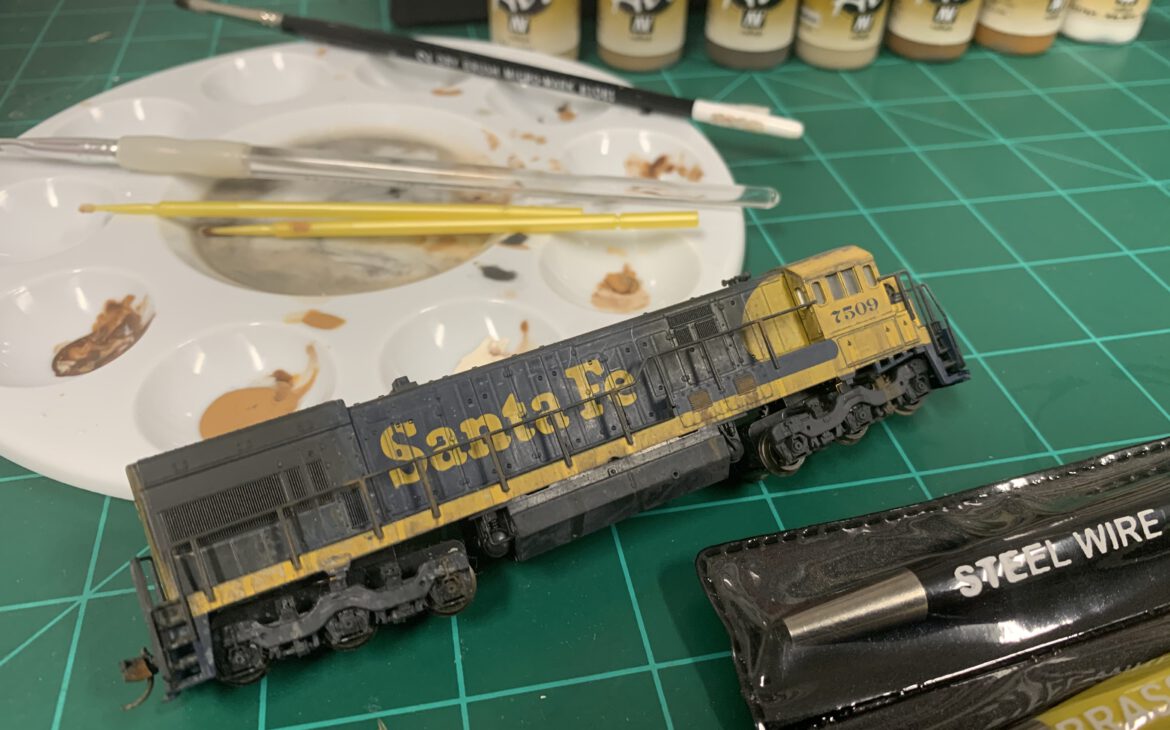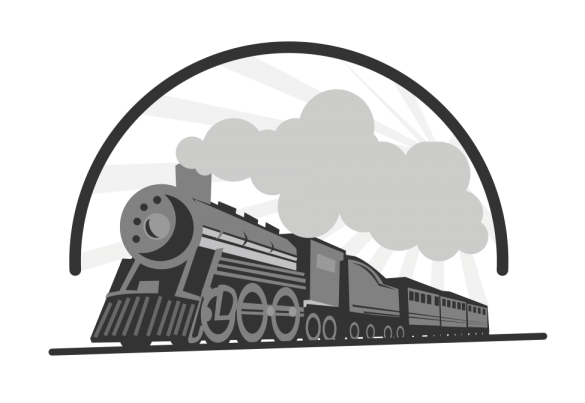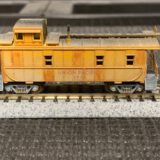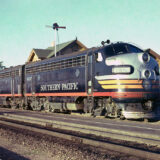About Weathering
One of the important components for the Fallen Flags Juntion railroad project is a realistic appearance of, well, everything on the layout. All of the engines and rolling stock are period specific, and to the extent possible, accurate in as much detail as possible. That also includes weathering.
Because real trains are typically outside – for years on end – in rain, snow, heat, wind, mud, dust, and diesel soot, it’s only after a freight car, passenger car or locomotive have emerged from the paint shop that they look pristine. Even coming off of the wash rack can produce a “semi-clean” appearance for most rail cars. Weathering of models includes a wide array of elements, including but not limited to grime, rust, peeling or damaged paint, faded letters, and in some cases graffiti.

When I’ve modeled HO scale trains, I relied on an airbrush and pastel chalks. With N Scale, an air brush can be easily overdone, do I’ll be focusing on producing weathered rolling stock and motive power using hand painted weathered elements, along with chalks and inks. This creates an added challenge, and it should prove to be interesting, or at least I hope it will. Watch our YouTube channel for episodes that focus on weathering – coming in late 2020.
What are some of the things I look for when weathering a locomotive or a freight car? The best place to start is with real trains – or prototype trains to use the appropriate terminology. The best way to emulate real weathing is to look at the real effects it has on every type of train – including where the car has been transported from, what it carries, and the elements it was subjected to while en route. There is no end of examples to be found, either through a Google search, or when looking through books, magazines, and videos. YouTube is another good source, but try to look at higher resolution color videos to get a good feel for how the elements impact a train.
It’s also a good idea to get a few cheap, second hand freight cars to practice on. Once you pick up the way in which a brush, chalk, or pen can impact the look of a railcar, then you can feel more confident when working on something that is potentially expensive. Remember, there are N Scale freight cars that sell for more than $40 dollars, and locomotives that sell for hundreds of dollars.

When weathing freight cars, you also have an opportunity to upgrade the cars as well. I often add details, or replace the trucks and couplers with metal wheels, knuckle couplers (such as those made by Athern or Bachmann), and otherwide improve the overall look and feel of each item. There are a lot of really nice looking freight cars on the market that have cheap wheels and couplers. Buying a cheap car for $5 bucks, then adding $10 in upgrades and some weathering can often result in a nice looking and performing car that competes with the most expensive cars on the market.
The Fallen Flags Junction project will include weathered rolling stock for sale as well. To see what we may have on offer, check out our eBay store.



